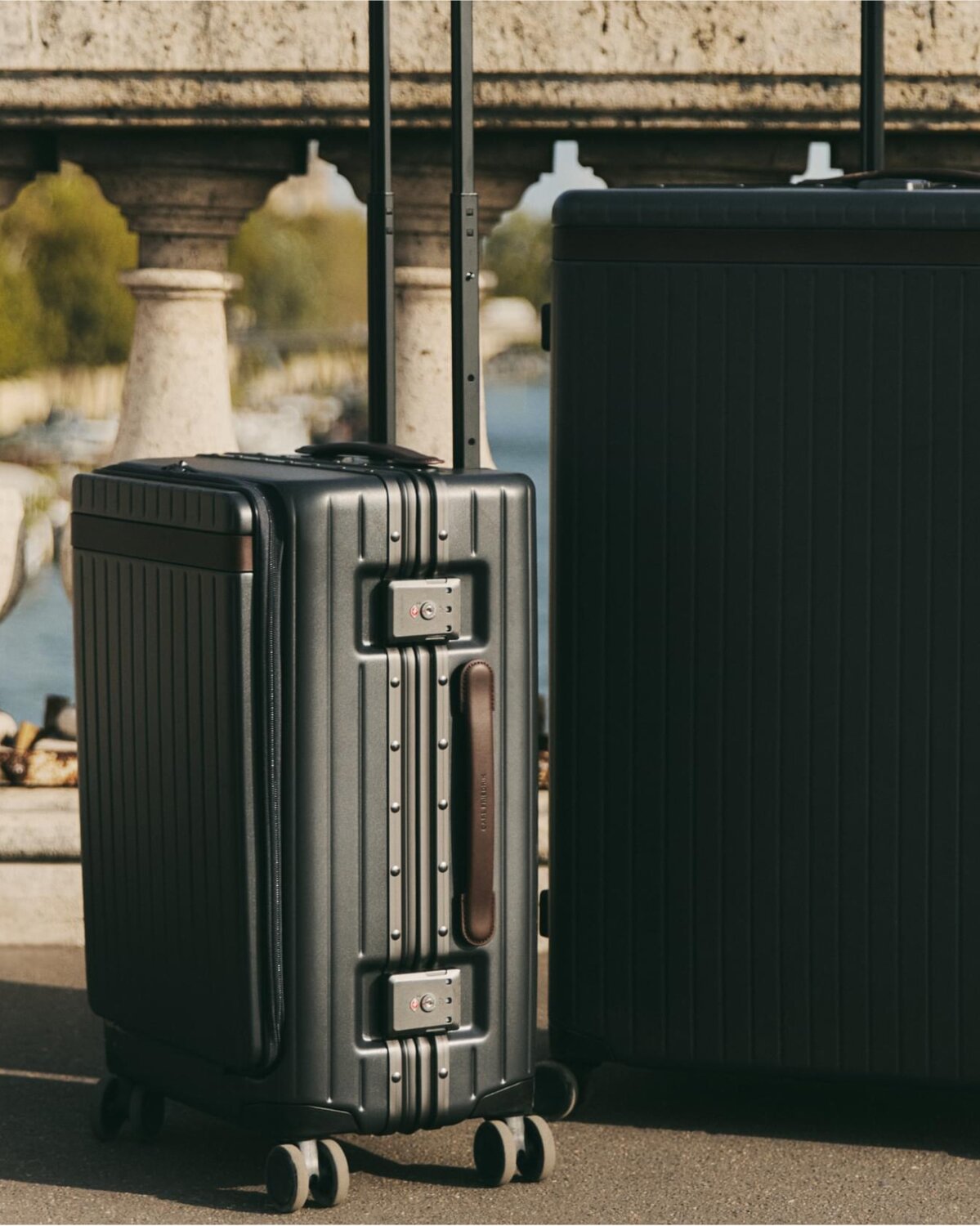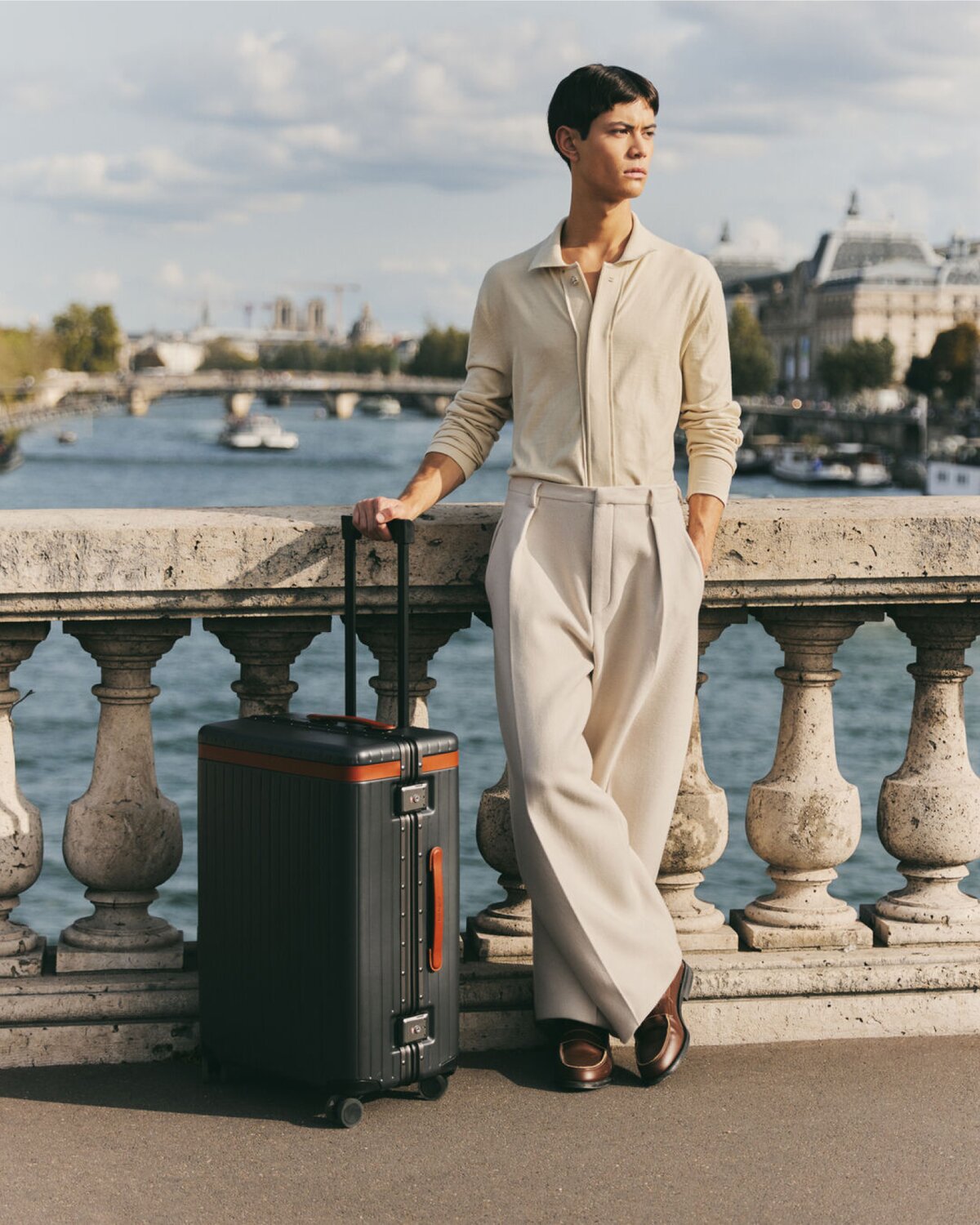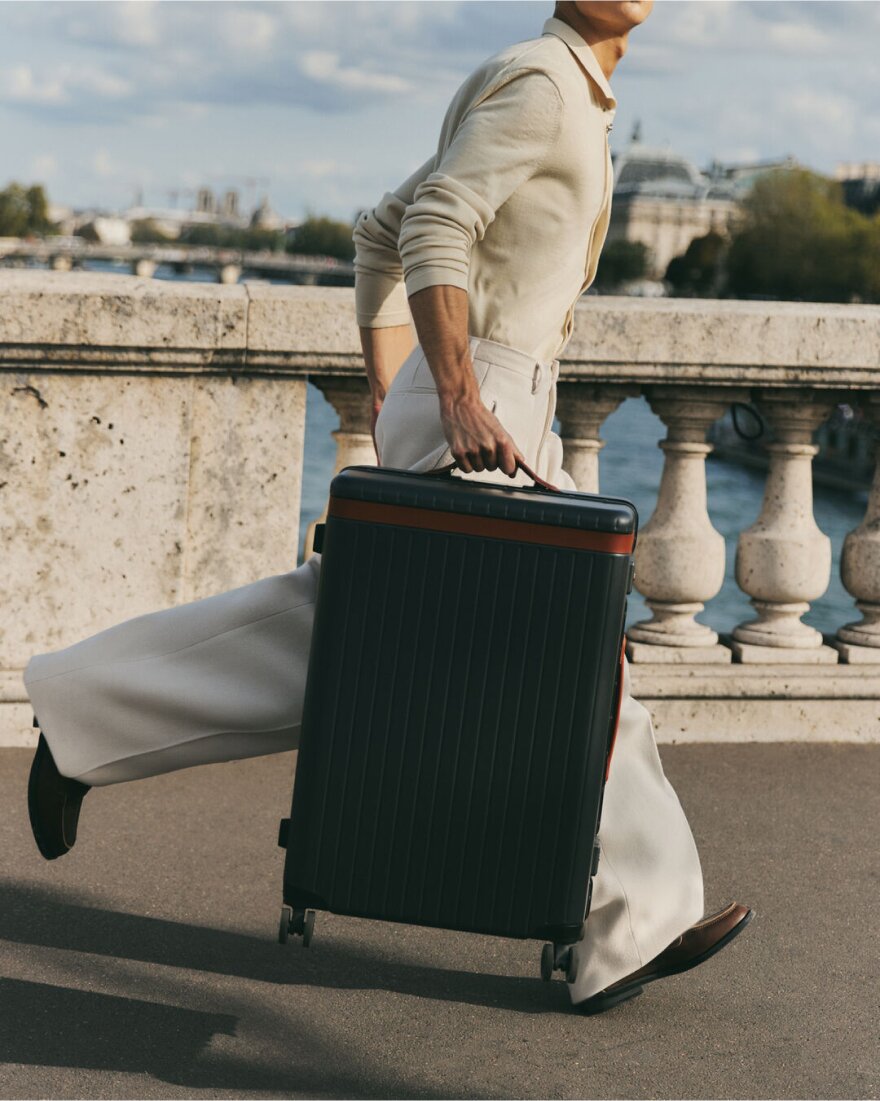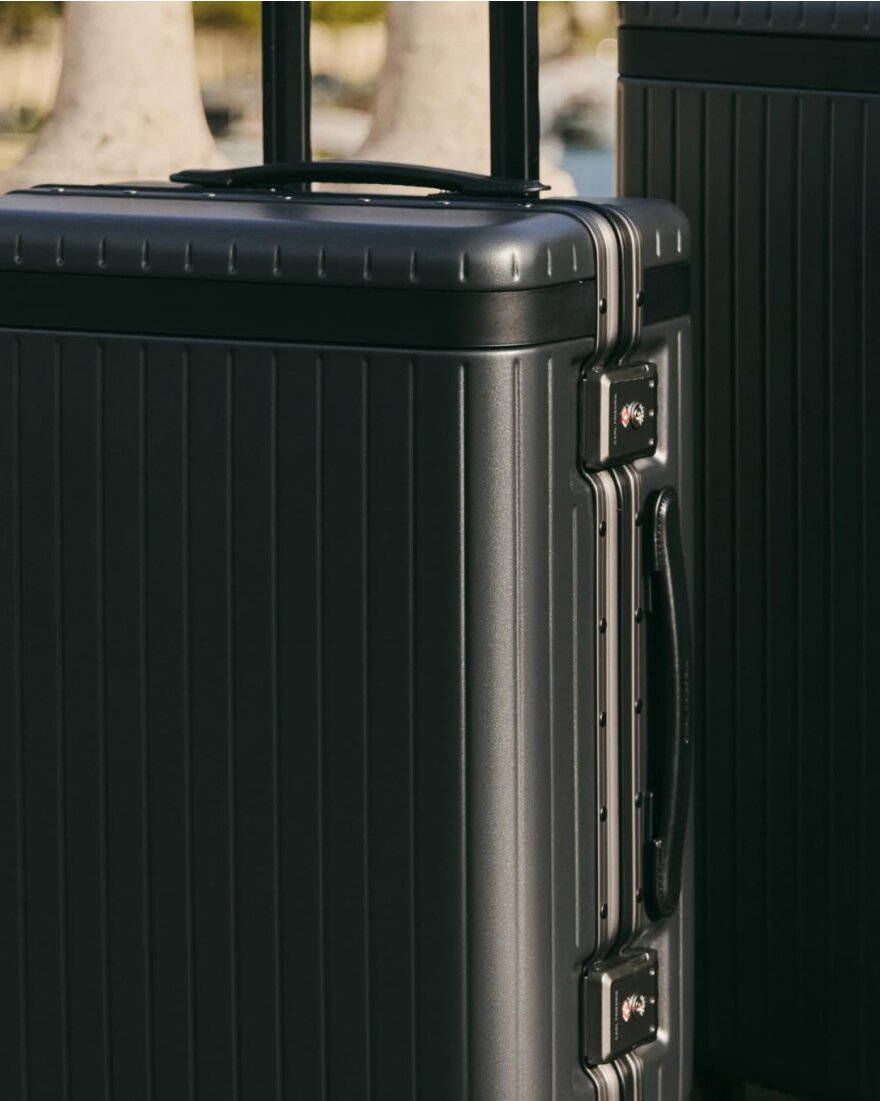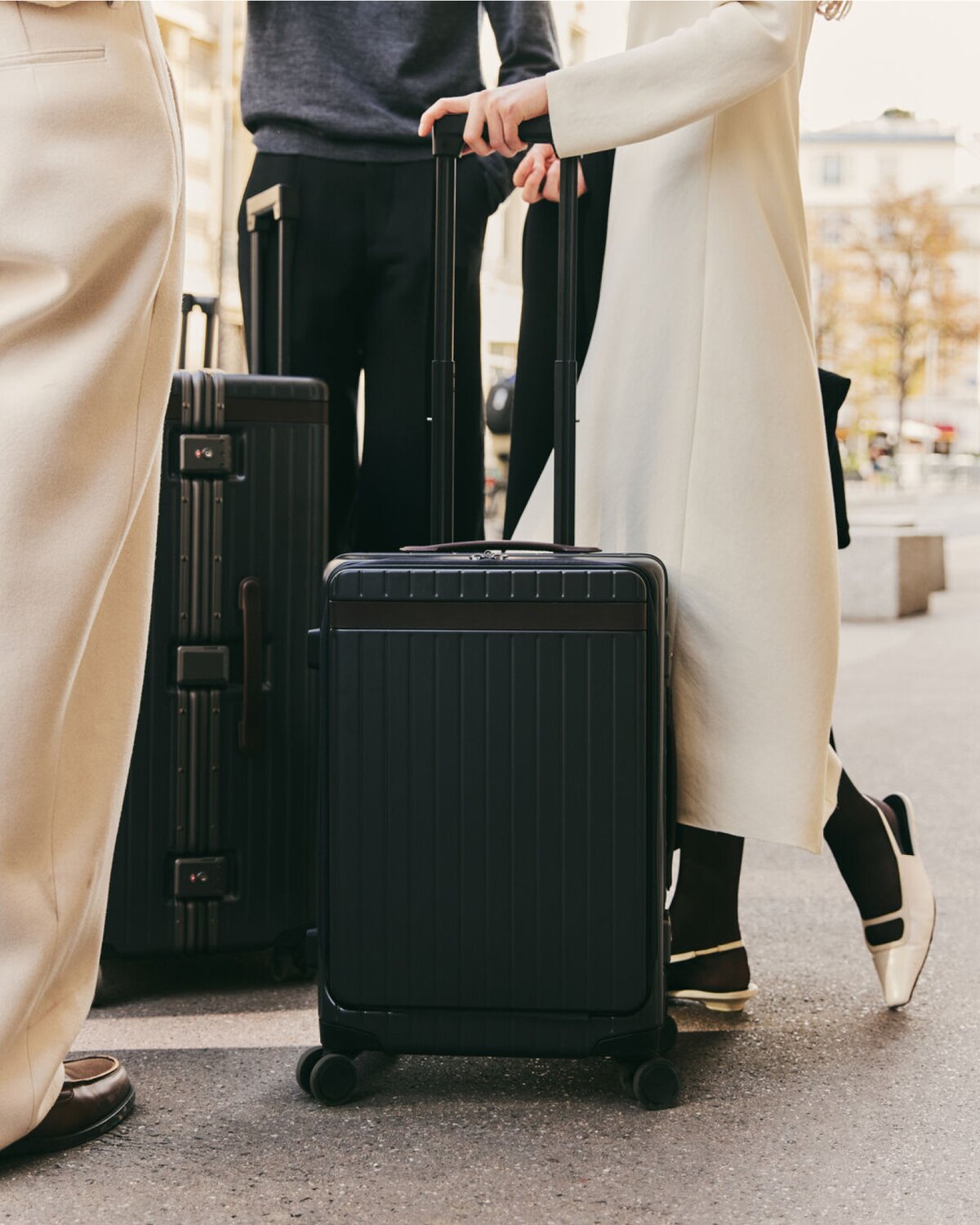Contents
What is polycarbonate?
Why choose polycarbonate luggage?
What are other uses of polycarbonate luggage?
Carl Friedrik polycarbonate luggage
What is ABS?
ABS vs polycarbonate luggage
What is polycarbonate?
Polycarbonate (PC) is a common engineering plastic that is blessed with an array of desirable characteristics, from extreme strength to transparency.
Dr Hermann Schnell discovered polycarbonate while working at the German pharmaceutical giant, Bayer AG, in 1953. He was reportedly ecstatic upon discovering that the newly discovered material was unbreakable. Bayer and Dr Schnell received a patent for the molecule later that year.
Because of its favourable physical properties, polycarbonate is used in a range of industries and is integral to the production of many heavy-duty industrial goods, as well as robust consumer goods. German luggage brand, Rimowa, took a punt in 2000 by designing the first polycarbonate suitcase. In the ensuing decades, polycarbonate has become an extremely popular choice for travel brands.
Why choose polycarbonate luggage?
So you’ve booked your dream trip to the Maldives, stocked up on crisp linen shirts and Panama hats, and now you’re on the hunt for a new travel case. Why should a polycarbonate suitcase be the next thing on your shopping list?
Durability
The primary responsibility of a suitcase is to safely transfer personal belongings from one destination to another. That’s really it. But with heavy-handed baggage handlers, ‘war zone’ carousels and general wear and tear to contend with, finding a suitcase that can cope with the pressures of modern travel is no mean feat.
This is where polycarbonate’s innate robustness comes to the fore. The material has an abnormally high tensile strength (so much so that it’s a key component of bullet-proof glass), meaning it can be subjected to a large amount of pressure without breaking. This ensures your possessions remain protected inside. Not only that, but polycarbonate travel cases also have a long shelf-life. Some even come with a lifetime guarantee, so they represent great investment pieces over time.
Flexibility
Although the benefit of having a ‘flexible’ suitcase isn’t immediately obvious, bear with us for a moment. While polycarbonate shell luggage appears rigid, when it absorbs shock it can sometimes cave in, causing an indentation. Such is the material’s elasticity, however, that it can be easily returned to the original shape with force. Leaving the case looking as good as new.
Lightweight nature
Any seasoned traveller knows that the lighter the load, the easier the journey. One of polycarbonate luggage’s main USPs is that it’s extremely lightweight, especially in comparison to other plastic suitcase materials (e.g. ABS). This translates to increased mobility and less strain on the body. Not to mention that with increasingly draconian suitcase weight restrictions and expensive fees for going over, having lighter luggage is a real bonus.
Versatility
If you subscribe to the view that variety is the spice of life, polycarbonate travel cases have you covered. Polycarbonate is amorphous (having no definite form) and can easily be moulded by manufacturers into unique shapes. For example, our collection of polycarbonate suitcases is characterised by the clean-lined grooves that run down the side of each shell and complement the sleek aesthetic.
While polycarbonate is transparent in its natural state, it’s very responsive to dyes and can take on any colour a manufacturer pleases. Modern designer luggage brands – think Rimowa, Horizn, Away — generally take a bold approach to aesthetics and that’s why many choose to work with the infinitely versatile polycarbonate. Of course, this has a positive knock-on effect for consumers because they get to choose from a wide variety of luggage designs.
What are other uses of polycarbonate luggage?
Polycarbonate’s unique attributes mean it has many applications. Despite being a type of plastic, it’s fully recyclable and generally considered to be a sustainable material.
One interesting application of polycarbonate is eyewear, including contact lenses, sunglasses and safety goggles. Transparent and a natural UV filter, polycarbonate can protect our eyes from harmful UV radiation emitted from the sun. That it’s lighter also than glass is another benefit.
A thermoplastic, polycarbonate is highly resistant to the effects of heat and possesses strong levels of heat retention. Two characteristics that make it the ideal building material for greenhouses, where controlled temperatures are needed throughout the year to sustain plant life.
The blend of high-impact resistance and relative lightness that polycarbonate offers has led to it being adopted by the construction industry in several ways. Polycarbonate shells sit atop grand buildings as ultra-resilient roof panels and are important in the making of swimming pool enclosures. While the material is also used to create cladding and glazings.
Carl Friedrik polycarbonate luggage
If you’re intrigued by the benefits associated with polycarbonate luggage, be sure to check our suitcase range. We have two hard-shell collections, each with polycarbonate shells: Core and Hybrid.
Sizes range from cabin to checked, extra large and trunk. These cases are so resilient they are backed by a lifetime guarantee — making them ideal accessories for the frequent traveller.
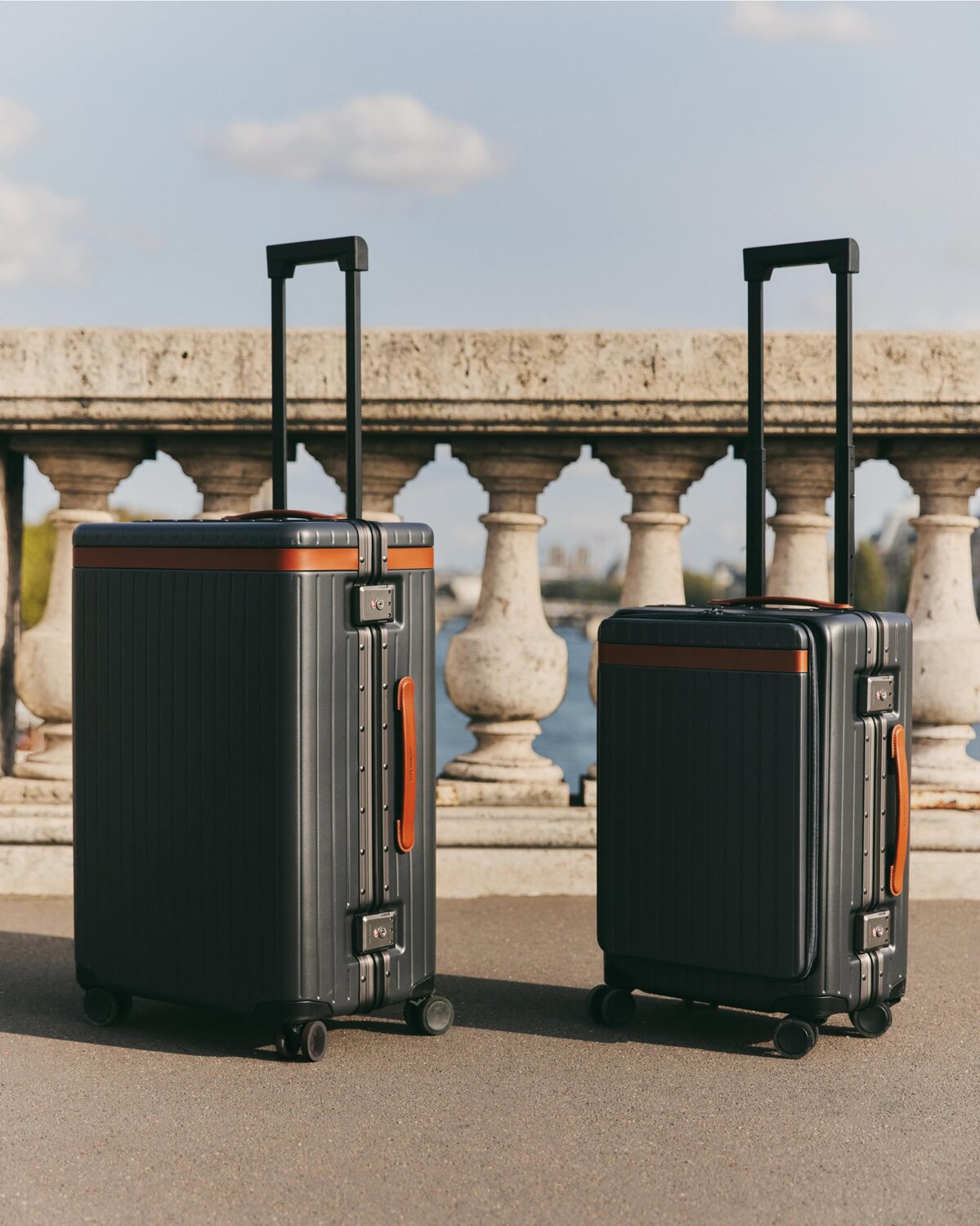
The Luggage Set
What is ABS?
ABS is an engineering plastic that is produced by combining three other plastics: acrylonitrile, butadiene and styrene. Amorphous, heat-resistant and boasting high tensile strength, it shares many characteristics with polycarbonate. It’s no surprise, then, that ABS is an extremely common suitcase material; however, it’s also used to produce everything from LEGO bricks to home appliances and computer keyboards.
ABS vs polycarbonate luggage
When comparing the merits of ABS vs polycarbonate as suitcase materials, who comes out on top?
From a purely functional perspective, polycarbonate luggage is the best option. While ABS is undoubtedly a tough plastic, polycarbonate has over twice the impact strength. Considering the rough treatment a suitcase experiences throughout a holiday (thrown onto conveyor belts, stacked on luggage carts, dragged up hotel stairs), durability is an invaluable trait. The longevity of polycarbonate suitcases will also save you money over time, as you will be required to replace them less frequently.
Structurally, the elasticity of polycarbonate makes it easy to fix the shell indentations that can naturally form over time. But ABS — a rigid material — is more likely to crack under pressure. It’s also worth noting that ABS is also susceptible to UV radiation, meaning that direct sunlight will cause it to degrade and even take on a yellow hue over time. In contrast, polycarbonate has a high resistance to UV rays.
Weight is another factor where polycarbonate has the edge. You can broadly expect a polycarbonate carry-on case to weigh around 1kg less than an ABS alternative. That’s the equivalent of 5-6 cotton T-shirts — certainly not a negligible amount.
If affordability is a key consideration, ABS luggage has the advantage. ABS is relatively easy to manufacture and accordingly cheap: it costs around half the price of polycarbonate. Many brands opt to work with ABS due to the lower cost of production. However, this advantage has to be set against the (often) inferior shelf life of ABS suitcases.
Table comparing ABS vs polycarbonate luggage
| Polycarbonate | ABS | |
|---|---|---|
| Flexibility | Flexible | Inelastic |
| Durability | Extremely durable with high impact resistance | Durable, but less so than polycarbonate |
| Scratch resistance | Prone to surface scratches over time | Scratch-resistant |
| Weight | Lightweight | Generally twice as heavy as polycarbonate |
| Weather resistance | Weather resistance | Weather resistance |
| Weather resistance | Highly resistant to heat & UV | Prone to discolouring over time due to limited UV resistance |
| Cost | Medium-high | Generally inexpensive |
| Perks | Self-extinguishing; recyclable; sleek aesthetic | Recyclable |
Takeaway
With its advantageous structural properties and general robustness, it’s little wonder that polycarbonate is such a popular luggage material. If you’re a fan of hardside suitcases, it’s certainly hard to look past a streamlined polycarbonate case.
What is the difference between polycarbonate and polypropylene luggage?
Is polycarbonate luggage durable?
ABS vs polycarbonate luggage, which is better?
The latest product news and travel guides? It's just a sign-up away.

